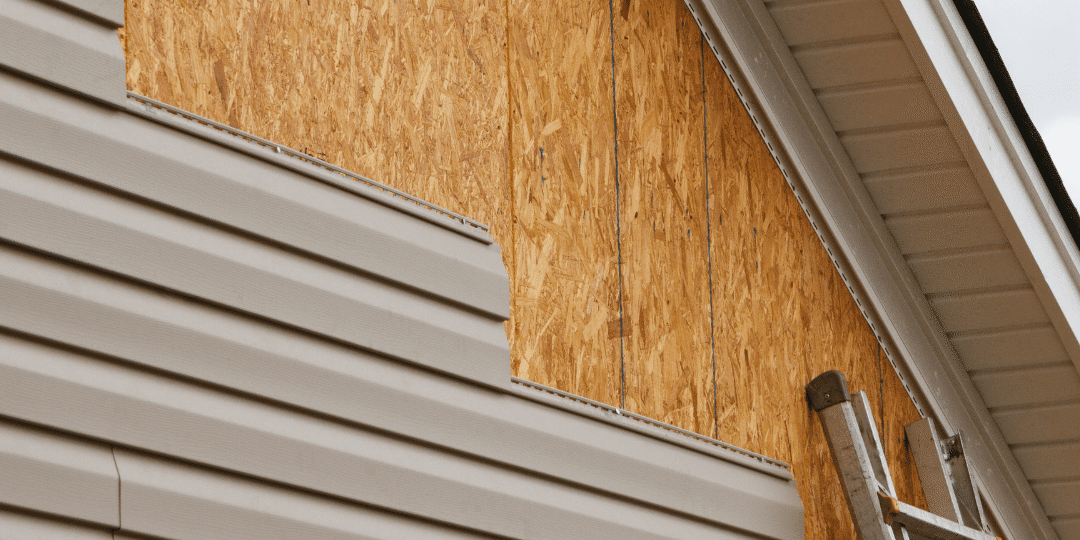Selecting the right home siding is one of the most important home improvement decisions you can make. It affects your home’s curb appeal, energy efficiency, maintenance requirements, and overall value. With so many building materials on the market—vinyl, fiber cement, wood, metal, stucco, brick, and more—it’s essential to understand how each option fits your home’s climate, style, and your personal goals for durability, cost, and sustainability.
Let’s break down the most popular siding types, including key insights about materials like cement, polyvinyl chloride (PVC), and cellulose fiber, while highlighting why professional siding installation matters—especially in Colorado’s extreme weather conditions.
Key Considerations When Choosing Siding
Climate & Environmental Resistance
Northern Colorado homeowners know the impact of wind, snow, hail, and dry heat. Your siding must resist moisture, pests like termites, and even potential wildfire exposure. Fiber cement siding, for example, is non-combustible and resistant to both insects and rot—making it ideal for mountain and Front Range homes.
Home Style & Architecture
From batten designs on craftsman homes to lap siding or vertical siding on modern builds, your siding must complement your home’s architecture. Brands like James Hardie Industries and CertainTeed offer customizable profiles to match your preferred wood grain, stucco, or shingle aesthetic.
Budget & Long-Term Investment
The cost of siding involves more than the installation—consider maintenance, repair, and lifespan. While vinyl siding (made from polymer or PVC) is often the most affordable and requires little maintenance, options like fiber cement, hardie board, or steel offer superior durability and warranty protection that can justify a higher upfront investment.
Popular Siding Materials: Pros, Cons & Best Use Cases
Vinyl Siding
- Pros: Affordable, lightweight, weather-resistant, easy to clean with a garden hose, available in various colors and textures including vinyl shake siding and insulated vinyl siding.
- Cons: Can warp or fade in harsh sun, lower impact resistance, not as eco-friendly.
- Best for: Homeowners seeking low-cost, quality vinyl siding with minimal upkeep.
- Pro Tip: Look for Vinyl Siding Institute certified products for high performance.
Fiber Cement Siding (e.g., James Hardie Siding)
- Pros: Extremely durable, fire-resistant, mimics wood, stucco, or clapboard, resists mold, pest, and moisture. Brands like James Hardie and Allura Siding offer leading fiber siding installation products.
- Cons: Requires cutting with a circular saw (generates dust), heavier, more complex to install, higher initial hardie siding cost.
- Best for: Homeowners seeking cement siding that blends aesthetics with longevity and sustainability.
- Important: Installing fiber cement products like Hardie Board Siding, Hardie Panel HZ10, or Hardiplank may require specialized tools and trained installers to reduce exposure to silica dust, which can pose health risks like lung cancer if mishandled.
Wood Siding
- Pros: Natural beauty, excellent insulation, customizable with paint, stain, or caulk.
- Cons: Requires frequent maintenance, prone to termite and moisture damage, can warp without proper care.
- Best for: Homeowners who prioritize aesthetic charm and are willing to invest in regular renovation and upkeep.
Metal & Steel Siding
- Pros: Fire-resistant, low-maintenance, durable against hail and high wind. Often made from recycled materials, offering good environmental sustainability.
- Cons: Prone to dents, noisy during storms, can rust if not properly sealed.
- Best for: Modern homes or commercial-style builds looking for minimalist aesthetics and longevity.
Beyond the Materials: Key Installation & Maintenance Tips
Whether you choose hardie board and batten, cement board siding, engineered wood, or vinyl siding products, professional installation is crucial. Improperly installed siding can lead to water infiltration, mold growth inside walls, or costly repairs to soffit and roof connections.
At Distinct Painting, our team ensures every project includes:
- Proper removal of old siding, including possible asbestos cement if present.
- Use of moisture barriers like Tyvek to protect construction materials.
- Installation of siding according to manufacturer specs, including James Hardie siding near me guidelines.
- Environmentally conscious material disposal and jobsite cleanliness.
Make the Smart Choice with Distinct Painting
Whether you’re upgrading to fiber cement, want a vibrant vinyl siding refresh, or need help navigating the wide world of home siding products, Distinct Painting offers trusted advice, expert installation, and high-quality materials across Loveland and Northern Colorado.
We proudly work with leading brands like James Hardie, CertainTeed, and GAF Weatherside, and we’re here to make your next home improvement project smooth, safe, and stylish.
Need help choosing the best siding for your home?
Request a quote today and let our experienced team help you protect and enhance your home with confidence.
Frequently Asked Questions
1. Is fiber cement siding safe to install?
Yes, when installed by professionals using proper equipment. Fiber cement can produce silica dust when cut, which is why trained crews use the right tools and safety precautions. Always hire certified installers for health and safety.
2. How often should vinyl siding be cleaned?
Typically once or twice a year using mild soap and a garden hose. Regular cleaning helps preserve its color and appearance while reducing mold or dirt buildup.
3. Can I install new siding over old siding?
It depends on the existing siding’s condition. Sometimes vinyl or fibre cement can be layered over old materials, but this must be assessed case-by-case to avoid structural or moisture issues.
4. Does siding replacement add value to my home?
Absolutely. New roofing siding improves curb appeal, reduces energy loss, and offers a strong investment return during resale.
5. What is the difference between Hardie Board and traditional cement siding?
Hardie Board (by James Hardie Industries) is a brand of fiber cement siding engineered with cellulose fiber, sand, and Portland cement for enhanced performance and aesthetic flexibility. It outperforms traditional asbestos cement or basic cement board siding in both durability and warranty.





